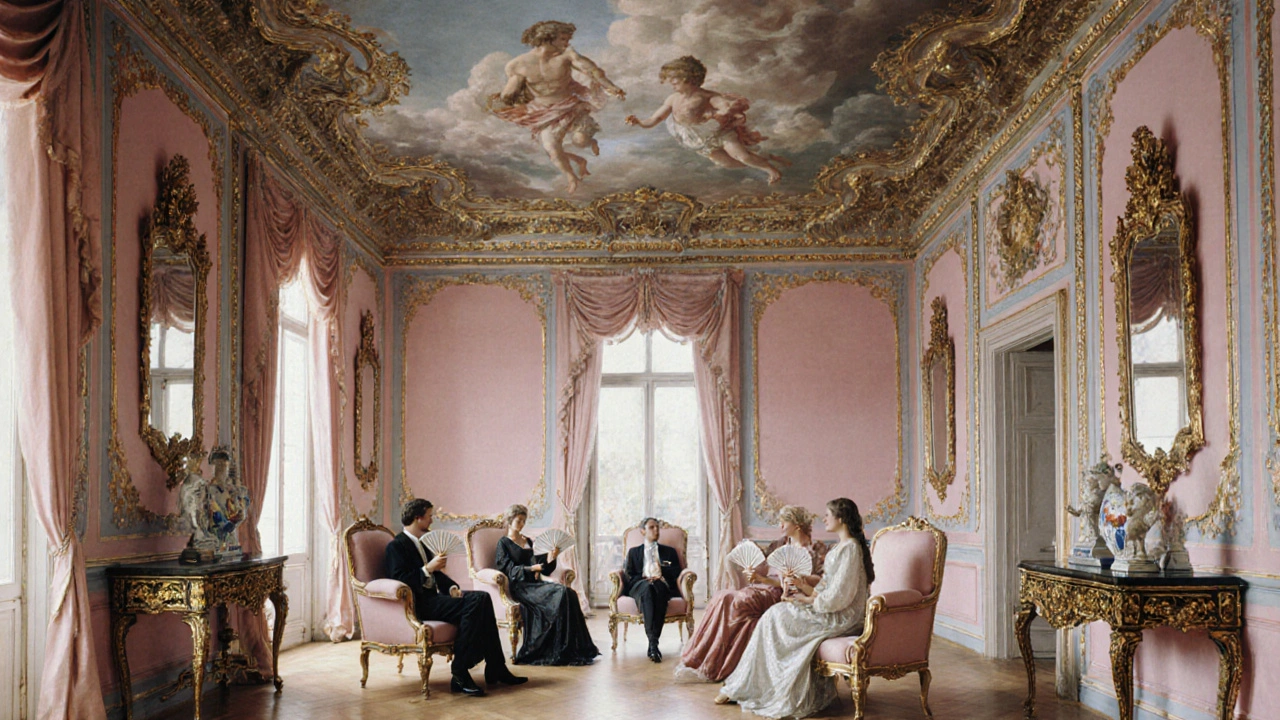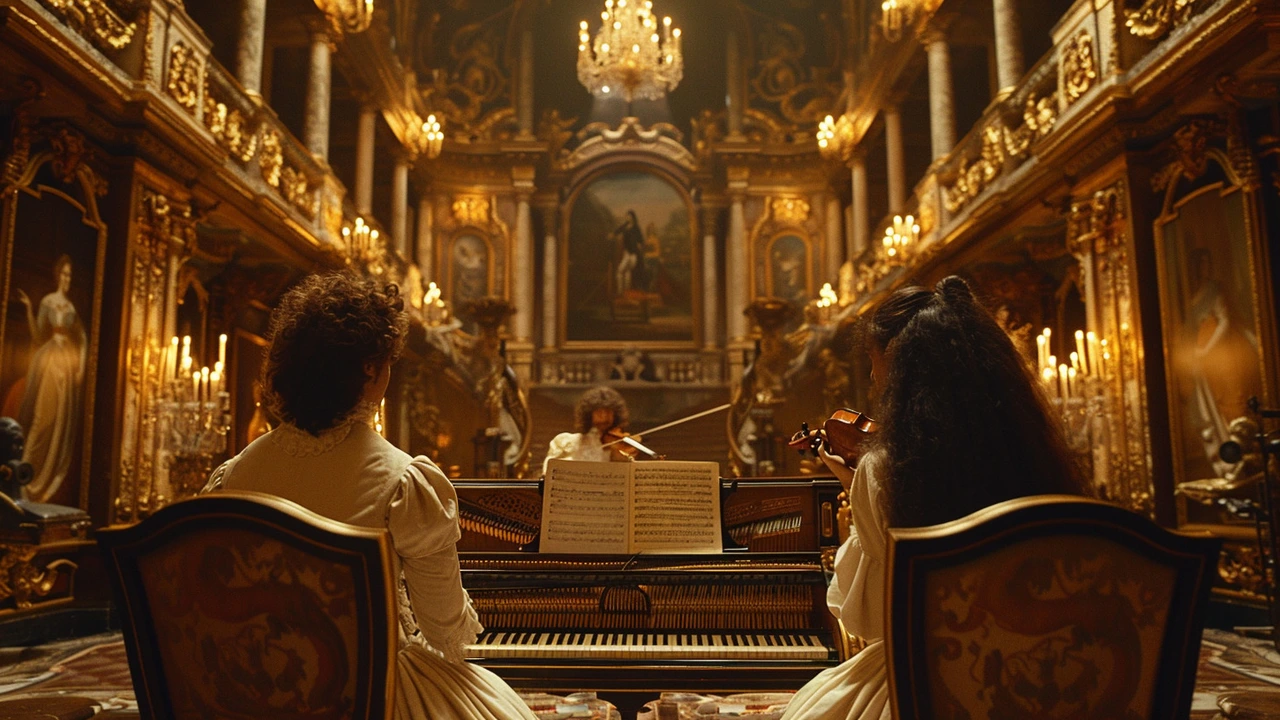Rococo: Spot the Style and Bring It Home
Rococo started in early 18th‑century France as a reaction to heavy Baroque formality. Think smaller rooms, lighter colors, and decoration that feels playful instead of overpowering. It shows up in paintings, furniture, and intimate interiors—salons built for talking, flirting, and showing off fine taste.
Key features to spot
Look for curved lines, asymmetry, and natural shapes like shells, leaves, and flowers carved into wood or plaster. Pastel colors—pale blue, soft pink, creamy white—pair with lots of gilding. Mirrors, chandeliers, and painted ceilings that feel airy and decorative are common. In paintings, watch for scenes of leisure, elegant costumes, and a light, feathery brushwork from artists like Watteau, Boucher, and Fragonard.
Rococo architecture isn’t about massive columns or strict symmetry. It focuses on interiors: small salons, decorative paneling (boiserie), and detailed fireplaces. Rooms were made to feel intimate and lively, not grand and solemn. That difference is key when you try to spot Rococo versus Baroque or Neoclassical designs.
Easy ways to add Rococo to your home
If you want Rococo touches without turning your place into a museum, start small. Add one ornate mirror with a gilt frame or a single carved chair with curved legs as a focal point. Use a soft color on one wall or pick cushions with floral patterns. Mix a Rococo piece with clean-lined modern furniture so the ornate details stand out instead of overwhelming the room.
Lighting helps a lot. Swap a plain light fixture for a chandelier or a lamp with a scalloped shade. For texture, choose silk or velvet cushions and a rug with a subtle floral motif. When shopping vintage, focus on small items—candlesticks, picture frames, or a console table—so you can create pockets of Rococo charm without heavy cost or commitment.
For restoration or buying antiques, check the joinery and finishes. Genuine pieces often show hand-carved details and old patina. Reproductions can give the look at lower cost; ask sellers about materials and construction. If you plan to repaint or regild, test a small area first to see how the color reads in your light.
Want to see real Rococo? Look for 18th‑century salons and small palace interiors in European cities. Museum rooms often reconstruct the style with painted boiserie and period furniture. Visiting a single well-preserved room helps you feel how Rococo balances decoration with comfort.
Rococo is playful, intimate, and detail-focused. Use one or two signature pieces, keep colors soft, and let curves and natural motifs do the talking. That’s all you need to bring the style into a modern home without overdoing it.

Rococo Art: 18th‑Century Revolution Explained
Explore Rococo, the 18th‑century artistic revolution, its origins, key traits, famous artists, architecture, and lasting influence in a clear, engaging guide.
Read more
Rococo: The Revolutionary Art Movement That Broke the Mold
A deep dive into Rococo, the 18th‑century art movement that swapped Baroque drama for pastel playfulness, covering its origins, key artists, characteristic style, and lasting influence.
Read more
Exploring Rococo: The Golden Age of French Art
Rococo, often considered the golden age of French art, emerged in the early 18th century. This style is known for its ornate details, playful themes, and light-hearted elegance. The movement spread beyond France, influencing various European art forms. This article delves into the origins, characteristics, notable artists, and lasting impact of the Rococo period.
Read more